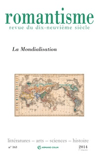
ROMANTISME
metrics 2024
Exploring the Depths of Romantic Thought
Introduction
ROMANTISME is a distinguished academic journal published by EDITIONS SEDES, focusing on the rich interdisciplinary exploration of Romanticism in its various manifestations through history, literature, and the arts. Serving as a significant conduit for scholarly discourse, ROMANTISME invites researchers and practitioners to delve into comparative studies that bridge cultural, historical, and artistic insights. Though it holds a Q4 category ranking across multiple fields, including Cultural Studies, History, and Literature and Literary Theory, its commitment to advancing the understanding of the Romantic era remains strong. The journal, with an ISSN of 0048-8593 and an E-ISSN of 1957-7958, does not currently offer Open Access, but is accessible through various academic institutions, ensuring its content reaches a broad audience keen on enhancing their knowledge in this niche yet impactful scholarly domain. With its headquarters in Paris, France, ROMANTISME is poised to contribute significantly to the academic landscape from 1981 to 2024, making it a vital resource for students and researchers alike keen to interrogate the lasting legacy of Romantic thought and its relevance today.
Metrics 2024
 0.10
0.10 -
- 0.10
0.10 7
7Metrics History
Rank 2024
Scopus
JCI (Web Of Science)
Quartile History
Similar Journals
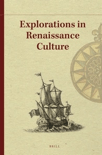
Explorations in Renaissance Culture
Bridging Disciplines in Renaissance StudiesExplorations in Renaissance Culture, published by BRILL, is a pivotal academic journal that delves into the multifaceted aspects of Renaissance studies, encompassing Cultural Studies, History, Literature and Literary Theory, Music, Philosophy, and the Visual Arts. Established in 1976 and operating without an open access model, the journal has evolved as a critical platform for scholars and enthusiasts alike, providing rigorous analysis and innovative perspectives on the cultural currents of the Renaissance era. With an ISSN of 0098-2474 and an E-ISSN of 2352-6963, it has garnered a respectable standing among academic peers, evidenced by its quartile ranking in the Q4 category across multiple fields as of 2023 and its Scopus rankings, which acknowledge its role within the broader arts and humanities disciplines. Based in the Netherlands, the journal plays a vital role in fostering scholarly dialogue and advancing research, making it an essential resource for researchers, professionals, and students committed to expanding their understanding of this transformative period in history.

Studi Pasoliniani-Rivista Internazionale
Illuminating the Intersection of Literature and CinemaStudi Pasoliniani-Rivista Internazionale is a distinguished academic journal dedicated to the exploration of the works and influence of Pier Paolo Pasolini, an eminent figure in Italian literature and cinema. Published by Fabrizio Serra Editore in Italy, this journal adheres to a multidisciplinary approach that encompasses critical analyses in linguistics, literature, and literary theory, making it a valuable resource for researchers and scholars seeking to deepen their understanding of Pasolini's legacy. Currently, Studi Pasoliniani holds a Q4 quartile ranking in both Linguistics and Language and Literature and Literary Theory, reflecting its commitment to fostering scholarly discourse within these fields. Although the journal does not operate under an open access model, its publication from 2019 to 2023 assures that its content remains relevant and beneficial for academic inquiry. Researchers, professionals, and students alike will find this journal an indispensable venue for engaging with contemporary interpretations and critiques of Pasolini's oeuvre, amidst the rich cultural and historical contexts that inform his work.

Cuadernos de Ilustracion y Romanticismo
Unveiling Cultural Narratives of Enlightenment and Romantic ThoughtCuadernos de Ilustracion y Romanticismo is an esteemed open-access journal published by UNIV CADIZ, SERV PUBLICACIONES, dedicated to the exploration of the cultural, literary, and philosophical dimensions of the Enlightenment and Romantic eras. With its ISSN of 2173-0687, this journal aims to foster a deeper understanding of historical narratives and their impact on contemporary thought, making it an essential resource for researchers and students alike. Since its inception in 1991, Cuadernos de Ilustracion y Romanticismo has encouraged scholarly dialogue across various fields, as evidenced by its categorical placements in the Q4 quartile rankings across History, Philosophy, Linguistics, and Literature. Despite its emerging status, the journal holds a significant presence within the academic community, ranked within the 50th to 25th percentile across multiple Scopus categories. With its convergence covering the years from 2019 to 2024, this publication remains committed to the rigor of scholarly research while facilitating access to its rich, insightful content, essential for nurturing the future of humanities scholarship.

Seizieme Siecle
Celebrating the Era of Transformation: The 16th Century RevisitedSeizieme Siecle is a distinguished journal published by LIBRAIRIE DROZ SA, focusing on the rich tapestry of the 16th century—a pivotal period that shaped the arts, literature, and cultural studies. As a publication dedicated to bringing scholarly discourse to the forefront, it features a range of critical analyses and interdisciplinary studies that examine the multifaceted influences of the era. While the journal currently does not operate under an Open Access model, its commitment to quality research is reflected in its inclusion in Scopus, albeit with limited convergence years and relatively low rankings across various relevant fields in the Arts and Humanities. Researchers, professionals, and students interested in deepening their understanding of historical contexts and their artistic expressions will find valuable insights within the pages of Seizieme Siecle. With its base in Geneva, Switzerland, the journal offers a unique perspective, contributing significantly to the ongoing academic conversations surrounding the Renaissance and its lasting impact.

Studia Theodisca
Connecting Ideas, Inspiring NarrativesStudia Theodisca is a distinguished academic journal published by Milano University Press that has been contributing to the fields of Cultural Studies and Literature and Literary Theory since its inception. With an ISSN of 1593-2478 and E-ISSN 2385-2917, this Open Access journal, available since 1994, ensures that research is freely accessible, fostering a global exchange of ideas. Located in Milan, Italy, the journal has gained traction within the academic community, reflected in its rankings: Q4 in Cultural Studies and Q3 in Literature and Literary Theory as of 2023. Despite its relatively new presence in Scopus, being placed in the ranks of 733 out of 1106 for Literature and Literary Theory and 1092 out of 1304 for Cultural Studies, it remains committed to advancing scholarly dialogue and exploring diverse narratives. Studia Theodisca serves as a vital platform for researchers, professionals, and students seeking to engage with innovative contributions and contemporary thought in these dynamic areas of study.
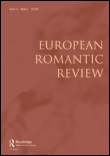
European Romantic Review
Engaging with the Aesthetics of a Transformative PeriodEuropean Romantic Review is a distinguished journal published by Routledge Journals, Taylor & Francis Ltd, focusing on the critical exploration of Romantic literature and its cultural impact. Since its inception in 1990, the journal has been a vital platform for scholarly discourse in the fields of Cultural Studies and Literature and Literary Theory, with an esteemed ranking in the 61st percentile for its contributions to the literature domain. Despite not being open access, European Romantic Review provides valuable insights to researchers, offering a rich repository of articles that engage with the complexities of Romantic thought, authorship, and aesthetics. The journal's commitment to advancing academic knowledge makes it an essential read for scholars, professionals, and students interested in the nuances of the Romantic era and its lasting influence on contemporary discourse.

LINKS Rivista di letteratura e cultura tedesca
Unveiling New Perspectives in German Literary StudiesLINKS Rivista di letteratura e cultura tedesca is a distinguished academic journal dedicated to the exploration and analysis of German literature and culture. Published by FABRIZIO SERRA EDITORE, this journal serves as a vital platform for researchers, professionals, and students who wish to delve into the intricacies of German cultural studies across various time periods and genres. With both ISSN 1594-5359 and E-ISSN 1724-1685, LINKS emphasizes scholarly rigor and multidisciplinary approaches, providing a space for innovative research and critical perspectives. Although the journal is not open access, it still plays a crucial role in advancing the understanding of German literature within the international academic community, contributing significantly to the field's ongoing dialogue and evolution. For those interested in enhancing their knowledge and engagement with contemporary issues in German studies, LINKS represents an essential resource.

Verbum
Fostering Interdisciplinary Dialogue in HumanitiesVerbum is a distinguished academic journal published by the Pazmany Peter Catholic University, Faculty of Humanities, focusing on the realms of linguistic studies, literature, and cultural discourse. With its ISSN 1585-079X and E-ISSN 1588-4309, Verbum serves as a vital platform for researchers and scholars to disseminate their findings and engage in interdisciplinary conversations. Although currently not available as an open-access journal, its rigorous peer-review process and commitment to scholarly excellence have solidified its importance within the humanities field. Based in Piliscsaba, Hungary, this journal has previously been indexed in Scopus and continues to offer valuable insights into themes relevant to linguistics and cultural studies. Verbum invites contributions that explore transformative ideas, fostering a deeper understanding of language and identity in contemporary society, making it an essential read for academics, professionals, and students alike.
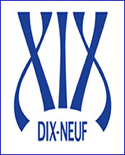
Dix-Neuf
Cultivating Rigorous Research in Cultural StudiesDix-Neuf is a prestigious academic journal published by Routledge Journals, Taylor & Francis Ltd, located in the United Kingdom. With a dedicated focus on the interdisciplinary study of literature, cultural studies, linguistics, and music, this journal offers a platform for scholars and researchers to explore the complexities of the 19th-century cultural landscape. Renowned for its rigorous peer-review process, Dix-Neuf occupies a significant position within its field, holding a Q3 ranking in Cultural Studies and Music, and a Q2 ranking in Literature and Literary Theory in 2023. Although it features traditional access options, the journal remains committed to disseminating high-quality research that is both insightful and impactful. By bridging various fields of inquiry, Dix-Neuf invites contributions that illuminate the rich tapestry of 19th-century thought, making it an essential resource for researchers, professionals, and students alike. Whether you're exploring linguistic nuances, literary innovations, or cultural dialogues of the era, Dix-Neuf is poised to enrich your academic pursuits.
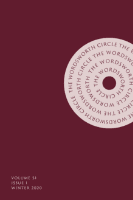
WORDSWORTH CIRCLE
Illuminating Literary Landscapes with Rigorous AnalysisWORDSWORTH CIRCLE, an esteemed journal published by University of Chicago Press, serves as a pivotal platform for scholars and enthusiasts in the fields of Cultural Studies and Literature and Literary Theory. With a firm foundation established from 2002 and expected to continue through 2024, the journal is recognized for its rigorous scholarship, evident in its prestigious ranking of Q1 in Literature and Literary Theory and Q2 in Cultural Studies for the year 2023. Although it is not an open-access journal, its valuable contributions to the discourse surrounding literary analysis and cultural critique make it a significant resource for researchers, students, and practitioners seeking to deepen their understanding of these dynamic fields. The journal's ISSN is 0043-8006, and it operates out of Chicago, IL, with its influence resonating across academic institutions and literary circles globally. By bridging historical perspectives and contemporary discussions, WORDSWORTH CIRCLE remains an essential publication for those dedicated to exploring the complexities of literature and culture.